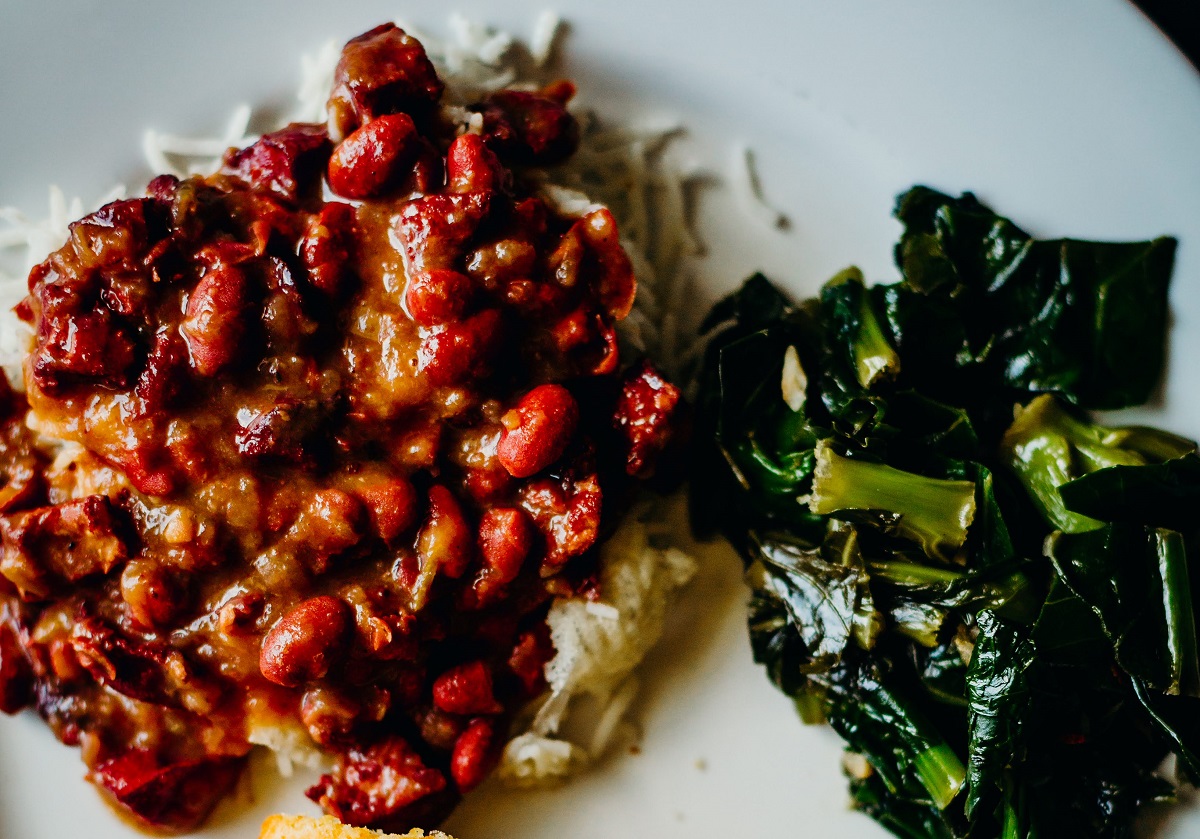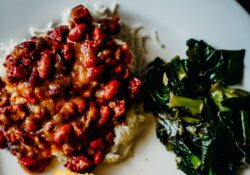Summer 2021
Peas, Beans, and Cornbread
Simple staples with deep roots in North Louisiana
Published: May 28, 2021
Last Updated: August 31, 2021

Photo by Lucie Monk Carter
One day in particular, while enjoying a large bowl of cream peas (Lady Zipper peas) with a huge piece of hot water cornbread, I realized I was eating some of the best food I’d ever tasted. Fresh-shelled field peas were part of what made this experience memorable; now when I cook peas they are always fresh or frozen, never dried. Our family usually ate peas and cornbread as the main dish instead of a side. This was for no particular reason other than we liked them—a lot. That main dish could also be a bowl of purple hull peas, crowders, or speckled butter beans.
Why is a pot of peas or beans, cooked with smoked meat served with hot water cornbread, such a comforting meal? If you grew up eating them this way, you know that peas can give you the same warm, satisfying feeling as a pot roast over mashed potatoes and gravy. It’s no secret that the South’s population is largely made up of the descendants of enslaved Africans, Afro-Creoles, and African Americans, and this may be why simple recipes for pinto beans and cornbread or red beans and rice are still alive and well; these descendants have come to cherish the simple foods that made up the bulk of their ancestors’ diets. As with red beans in South Louisiana, a pot of beans could be put on early in the morning by a working woman, enslaved or free, because they needed little attention as she moved on to other chores—particularly the laundry that might take her outdoors, notes Creole chef Panderina Soumas.
Whenever red beans and rice are mentioned, one immediately thinks of South Louisiana, but in the northern part of the state, pinto beans and purple hull peas are in our pots and on our steam tables. It is a bit shocking when someone from South Louisiana asks, “what are pinto beans?” Pinto beans are in the same family as kidney beans; originally from South America, they were introduced to Europeans by Native Americans during the 18th century .
North Louisianans are also accustomed to eating what we called “chili beans.” It was really known more for being a pot of beans with ground beef and chili powder than a pot of chili with beans, though it would sometimes contain a ham hock. Though similar to chili, this recipe was passed down from people who didn’t always have a lot of meat. This is also where the cornbread comes into play: beans and cornbread together make a very hearty meal, as well as one high in fiber and folate.
At my Us Up North Kitchen in Shreveport, tourists and locals can book a culinary experience where I chat about and eat North Louisiana cuisine with them. After one event, people were sitting around chatting, and I glanced over and saw a woman eating the remaining peas out of the serving bowl from her table. She said they were the best peas she had ever eaten.I’m often asked, “What do you do to the purple hull peas to make them taste so good?” The answer is keep it simple: smoked meat, onions, garlic, and spices.
Cornbread is normally eaten with peas and beans, (with the exception of red beans and rice, which are often served with buttered French bread). Up north, hot water cornbread is served with almost every meal. The technique is simple and usually passed down from an older generation. The recipe is simple and consists of only two ingredients: cornmeal and boiling hot water (it must be boiling to cook the cornmeal). Adding spices like salt and garlic powder is optional. The mixture is then formed into an oval-shaped pone and fried. Baked or hot water cornbread is a must when enjoying peas or beans. The traditional way to enjoy them is to crumble cornbread over the top to soak up the juices. This approach is delicious—and a true signature of southern eating.
Chef Hardette Harris is originally from Minden, Louisiana. The winner of many culinary awards and an expert on North Louisiana food, Chef Harris has turned many collard green haters into collard green lovers. Chef and Owner of Us Up North, a culinary food experience company, she is currently working on two cookbooks. Learn more at usupnorth.com.
